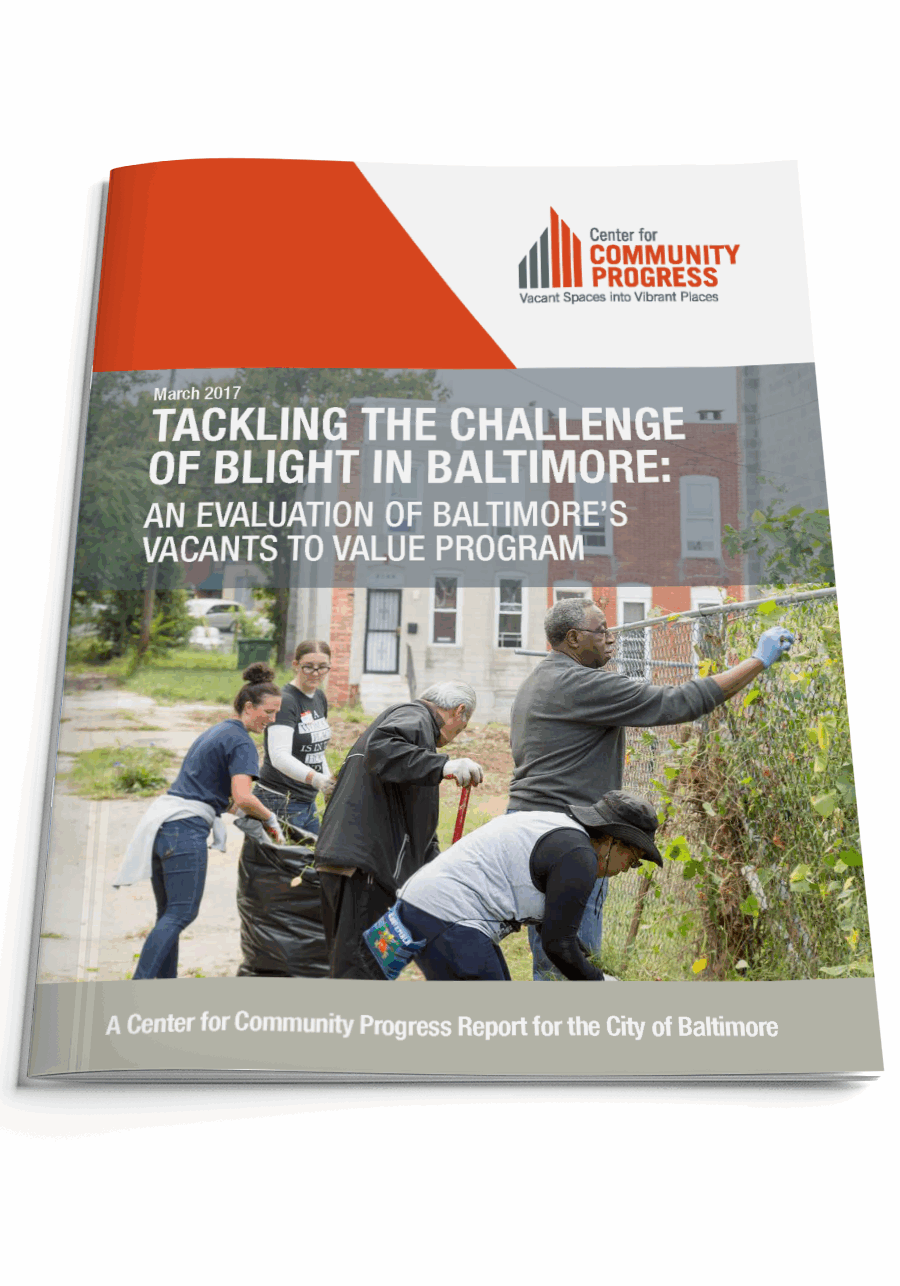Tackling the Challenge of Blight in Baltimore
An Evaluation of Baltimore’s Vacants to Values Program
Published: March 2017
Geography: Maryland
Author(s): Center for Community Progress
In 2010, the City of Baltimore kicked off the Vacants to Value (V2V) program, a multifaceted strategy to use code enforcement and related tools to reduce the number of vacant properties in the city and put them back into productive use. The V2V program was designed to be “a market-based and data driven, geographically focused program that employs seven strategies to eliminate blight and strengthen neighborhoods.”
In 2015, after the program had been underway for five years, the City of Baltimore commissioned the Center for Community Progress, in partnership with the Baltimore Neighborhood Indicators Alliance and the Schaefer Center of the University of Baltimore, to conduct an evaluation of the City’s Vacants to Value (V2V) program, and make recommendations for future program directions.
This report includes the results of our quantitative or statistical analysis of V2V program interventions and their effect on the neighborhoods in which they were pursued, as well as our qualitative findings from the interviews and focus groups we conducted with City officials, developers, neighborhood leaders, and others.
Subscribe to join 14,000 community development leaders getting the latest resources from top experts on vacant property revitalization.

